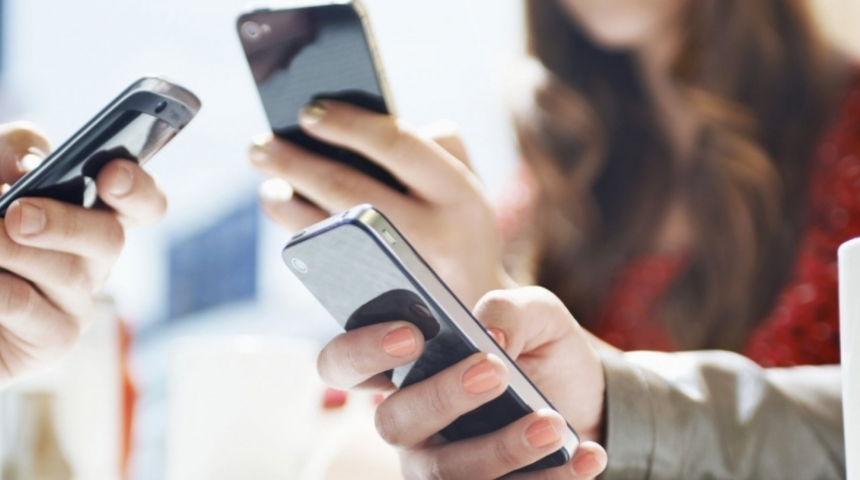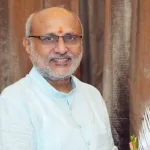Today, the mobile phone is no longer limited to making and receiving calls and text messages. Due to high speed internet access, numerous value-added services such as Facebook, WhatsApp, Instagram, You tube, Email, Online shopping/billing, Gambling and Gaming and many more are available on mobile phones, besides inbuilt high end camera facility, therefore, these devices are popularly called as ‘smartphones’ or ‘feature phones’. These multifunctional devices have become an essential part of modern life regardless of age, gender, religion, culture, education, economic/ health status, location, creed or colour.
Smartphones have made such a penetration into our lives that even at family level, parents and their children are lost to each other. Why? The answer is very simple and unambiguous. It is addiction to social media and some other services available on this small magical device. There is a fine, almost imperceptible, line between ‘fair use’ and ‘abuse’ of everything. The necessity of having the mobile phone has changed into obsession in all, especially the youth who are the first generation to live their lives constantly online in a world where borders have got eliminated and time is moving swiftly.
There is a famous proverb, ‘You can use a hammer to build a house, or you can use it to smash your thumb’. Smartphone like any other device has both pros and cons. It has made our life easy due to its wonderful features, but at the same time it has spoiled our children and youth due to its high addictive potential. The unfiltered material including the porn that is available on internet has confused the users and polluted our society. Even for academic purpose one has to be very careful.
Just a week ago one of the botany teachers in a WhatsApp group posted a video showing picture of a plant, ‘Oculoflora samsara’, having a human eye like structure at the top, with an ascription, “plant that can see”. It was not less than a wonder to me so I became curious to know about it in detail. After surfing the internet the picture proved to be technologically generated one with a fake name. Audrey Azoulay, UNESCO Director General has been so sapient to remark, “The digital revolution holds immeasurable potential but, just as warnings have been voiced for how it should be regulated in society, similar attention must be paid to the way it is used in education”.
Technological interventions have been a potent tool of comfort and convenience for the entire mankind. Thanks to Google, the world’s most widely used search engine, and worldwide web for their global outreach. Technology has factually made available everything to learners, especially education, making it inclusive and equitable. Those facing obstacles in accessing school, good instructional content and well-trained teachers due to distant location, resource constraints and functional difficulties have availed online education either free or at minimal cost. The number of students in MOOCS reached at least 220 million in 2021 and the language learning application Duolingo had 20 million daily active users in 2023. The average daily page views for Wikipedia, the free online encyclopaedia since 2001, is expected to exceed 249 million by the end of 2024.
However, such interventions need to be designed in ways, including content filtering, that do not compromise the objective of serving the true educational purpose of children and youth.Digital learning andsocial media platforms, e-banking and other digital payment systems have on one hand revolutionised the world but on the other hand they have opened gates of evil, deceit and cybercrimes for all the people irrespective of age and gender.
Youth are quick learners because of their sharp mind. They accept everything without much inquiry. The mobile phone along with its applications has captured us to such an extent that world seems incomplete without it. It has almost replaced the importance of oxygen to our life. Now the question arises; if this magical device is incessantly misused by way of overuse or by way of getting faulty material what will be the net result? The answer is ‘disaster’. This disaster could be intellectual, psychological, economic, cultural, sociological, and political and many more. The youth have fallen prey to it on an alarming scale. They not only make unnecessary phone calls and text messages to their peers but avail all the available features excessively. ‘Like’, ‘Comment’ and ‘Share’ have become the most extensively used social media icons. Worried about the centrality of mobile multimedia devices in the life of adolescents, Prof. Manuel Castells of the University of Southern California and his team (2007), after thorough research, have referred to contemporary youth culture as a ‘mobile youth culture’.
Although some scientists are of the view that mobile phone usage provides teenagers and adolescents with a chance to make and develop new relationships with others but Rice, Hagen and Zamanzadeh (2018) remarked that use of mobile phones has reached to the level where it has become an addictive public health dilemma especially for thosein schools and colleges, affecting their academic performance considerably through distraction of mind.
Today, users have become so absorbed in their phones that some unceasingly use the phone while walking on busy roads, which results into collisions. A research conducted by ABC News in the United States exposed that more than 1000 people get injured while ‘text walking’ and this figure increases every year (Dooley, 2015). Incidents such as walking into a fall or falling down the escalator/staircase are some examples resulting from mobile phone addiction. In a more serious matter, young drivers driving a car or riding a motorcycle are often seen driving with one hand while the other hand controls their smartphone. This highly dangerous practice, which distracts attention of the driver from the road, often becomes a cause of fatal accidents. People, especially youth, not only talk on mobile phones while driving but send text messages, ‘share’, ‘comment’ and ‘like’ social media posts as if the heavens will fall if there is a slight delay.
During my routine morning walk I could see scores of youngsters walking on the road with earphones, listening to music or on telephone call, looking unconcerned of the human and the vehicular traffic passing by. On November 23, 2024, at around 8 o’clock in the morning, I saw a teen-age scooter rider having narrow escape when his bike lost traction on the black-topped road resulting into skidding and getting dragged over for around 10-15 feet. I rushed to the spot, looked around, finding no one nearby, so alone tried to console him to get up, besides collecting his few items lying scattered on the road, including his mobile phone. When I asked him how his scooter slipped so violently over a dry and blank road, his reply was disappointing. He was very shameless but honest to admit that he was on a phone call while driving, so lost concentration. This is not the only such case. Most of the traffic accidents happen due to use of mobile phones while driving.
The addiction to smartphones is associated with attempts to frequently check the phone even though there are no notifications, an abnormal behaviour known as FOMO (fear of missing out) which compels users to constantly check social media so that they don’t miss out on what is happening. Nomophobia or ‘smartphone separation anxiety’ is another disorder which accounts for the worry that individuals experience when their smartphone is out of reach or out of order. Among various adverse effects of FOMO and nomophobia are poor sleeping and work quality and poor academic performance. In India 84% of the smartphone users check their devices within 15 minutes of waking up and the time spent on mobile phones has more than doubled from 2010 to 2023.
The figures of social media users are alarming. People burn their sweat and blood to earn for these service providers because a good proportion of their earnings goes towards recharging SIM cards. We should not be against technology or its integration into different aspects of life but its use should be within ‘Lakshman Rekha’ – judicious, not prodigious. Facebook continues to reign strong as the king of social media with more than 3.0 billion users out of a total of 5.22 billion social media users worldwide (Statista, 2024) followed by You Tube (2.5 billion), Instagram (2.0 billion), WhatsApp (2.0 billion), TikTok (1.7 billion), and WeChat (1.37 billion).
Social media platforms can be used to raise awareness about the harmful effects of many evils such as porn, hate and rumour mongering and substance/drug abuse but at the same time we must be concerned about the increasing use of such platforms to promote their marketing (INCB).These platforms often negatively impact our overall wellbeing by fuelling anxiety, depression, and loneliness. Although people of all ages are vulnerable to what they are fed with on social media, teens and adolescents are most susceptible due to peer pressure and peer influence.
The additional feature of camera in smartphone has made this device more attractive for people, but at the same time it has become life threatening due to ‘Selfie culture’. While the simple act of taking a selfie is not dangerous but people, especially youth, take risks by posing in dangerous settings while trying to get the perfect shot. In May 2014, a 29 year young pilot while taking selfie in his cockpit lost control of the aircraft causing it to crash in Colorado USA (Denver Post). In October 2017, three college students were run over by a train while taking selfie on the railway track on the outskirts of Bengaluru (The Hindu). Many such selfie related incidents, even more horrible, have been reported by media across India and abroad since then. According to a 2022 study published in the Journal of Travel Medicine, there were 379 selfie-related deaths worldwide between 2008 and 2021.
A study by Yildrimand others (2016) indicated that mobile phone addiction affects a student’s academic performance by negatively affecting the memory of the user. Professor Oliver Hardt, a psychologist and an expert in neurobiology of memory and forgetting at McGill University in Montreal, Canada is of the opinion that more dependence on mobile phones to remember things is actually worsening our own memory segment in brain, the cost of which might be an enormous increase in dementia (The Guardian, 2022).
Addiction leads to long hours of screen time which in turn affects the muscles of convergence in the eyes and the muscles of neck and shoulders. A person on an average looks at his smartphone80 times or more per day (India Today Feb. 2024) leading to an eye health issue, often called ‘Computer Vision Syndrome’ which leads to blurred vision, dry/sore eyes, headaches and nausea. An increase in screen time has caused an alarming rise in the number of people with visual impairment. Blinking helps eyes redistribute moisture, keeping them off from getting dry, and also acts as a natural defence against excessive exposure to outside elements like dust and sunlight. Blinking is reduced to half when we stare at smartphone, giving our eyes much less time to recover.
India has 1.2 billion mobile phone users and over 600 million smartphone users. The latter is expected to cross a billion by 2026, according to a Deloitte study, indicating that a future world will be dependent on these small devices (The Hindu, August, 2023). No one is against the use of smartphones to the extent it is useful in daily activities, however, one place where smartphone usage has become controversial is the premises of an educational institution especially classroom. Recently, UNESCO recommended a universal ban on the usage of smartphones in schools, saying that it was needed to tackle classroom disruption, improve learning, and help protect children from cyber bullying.
On the basis of a rigorous study conducted in 14 countries across world, the 2023 Global Education Monitoring Report (GEMR) by UNESCO has pointed out that the use of smartphones distracts students from learning especially in classrooms, and recommended that technology, which includes the use of smartphones, be only used in classrooms when it supports learning outcomes. The current scenario is that the social culture in schools is getting replaced fast by mobile culture. Student activity and participation and experiential learning is under threat. Table tennis tables and badminton courts are empty. Auditorium and conference halls give a deserted look, even during much valuable lectures and other important academic activities. Students are seen busy with their smartphones in corridors and gardens.
Removing smartphones from schools in Netherlands, Belgium, Spain and the United Kingdom was found to improve learning outcomes. In France, as a part of the move for children to spend less time in front of screens, which the government fears is arresting their development, the use of a mobile phone or any other electronic communications terminal equipment has been banned in nurseries, elementary schools and middle schools as a pilot project since 2018 ahead of a possible plan to enforce it nationwide from 2025 unless strictly for pedagogical purposes or to support children with disabilities.
In India, smartphone use by youth below 18 in Bansi village in Yavatmal Maharashtra has been banned by Gram panchayat officials from November 2022 to stop youngsters wasting time watching various sites and playing online games (TOI, 2022), a step that needs applaud and wide adoption by other parts of the state and the country at large. Laudably, the Delhi government has banned the use of mobile phones on school premises for both teachers and students and the school authorities have been instructed to set up helplines for use in emergencies (India Today, Oct. 2024).
The use of technology in educational institutes should be appropriate, equitable, scalable and sustainable. Students need to learn the risks and opportunities that come with technology. Only technology that has a clear role in supporting learning should be allowed in schools and colleges. ‘Lakshman Rekha’ should never be compromised.
The recently formed government in J&K deserves all compliments for reverting to March-December academic calendar in winter zone schools, due to their unique geographic and/or climatic conditions. However, parents as well as teachers are anxiously waiting for a legislative curb on the use of smartphones by teens and young adults in educational institutions, especially schools and colleges so that the younger generation is shielded from this epidemic, at least during school hours. Both parents as well as teachers have become helpless.
While parents get blackmailed easily by suicide, home-leaving and many more threats from their children and ultimately succumb to their irrational demands including providing of smartphones, teachers are afraid to act tough in absence of any ban or guidelines from the government.
(Author is Principal (Rtd) J&K Higher Education Department. Email: [email protected])








